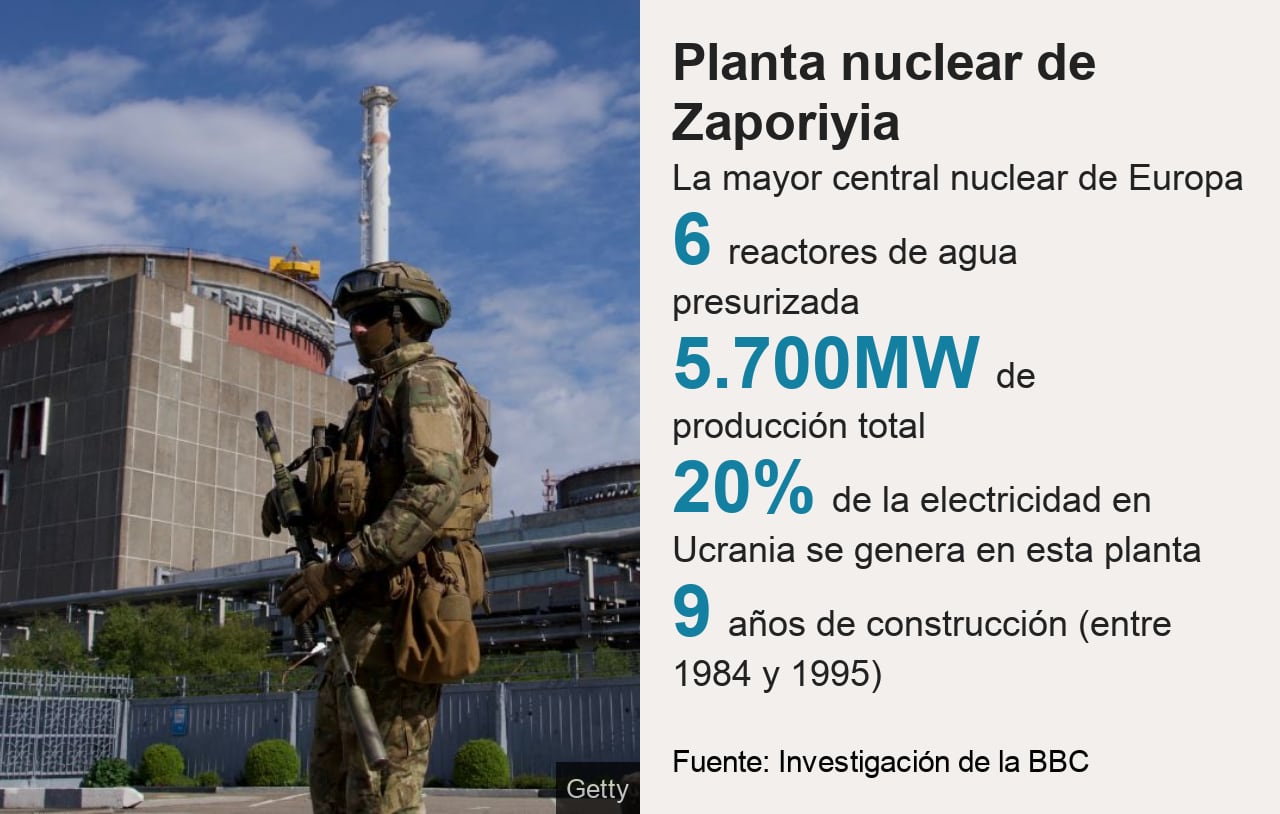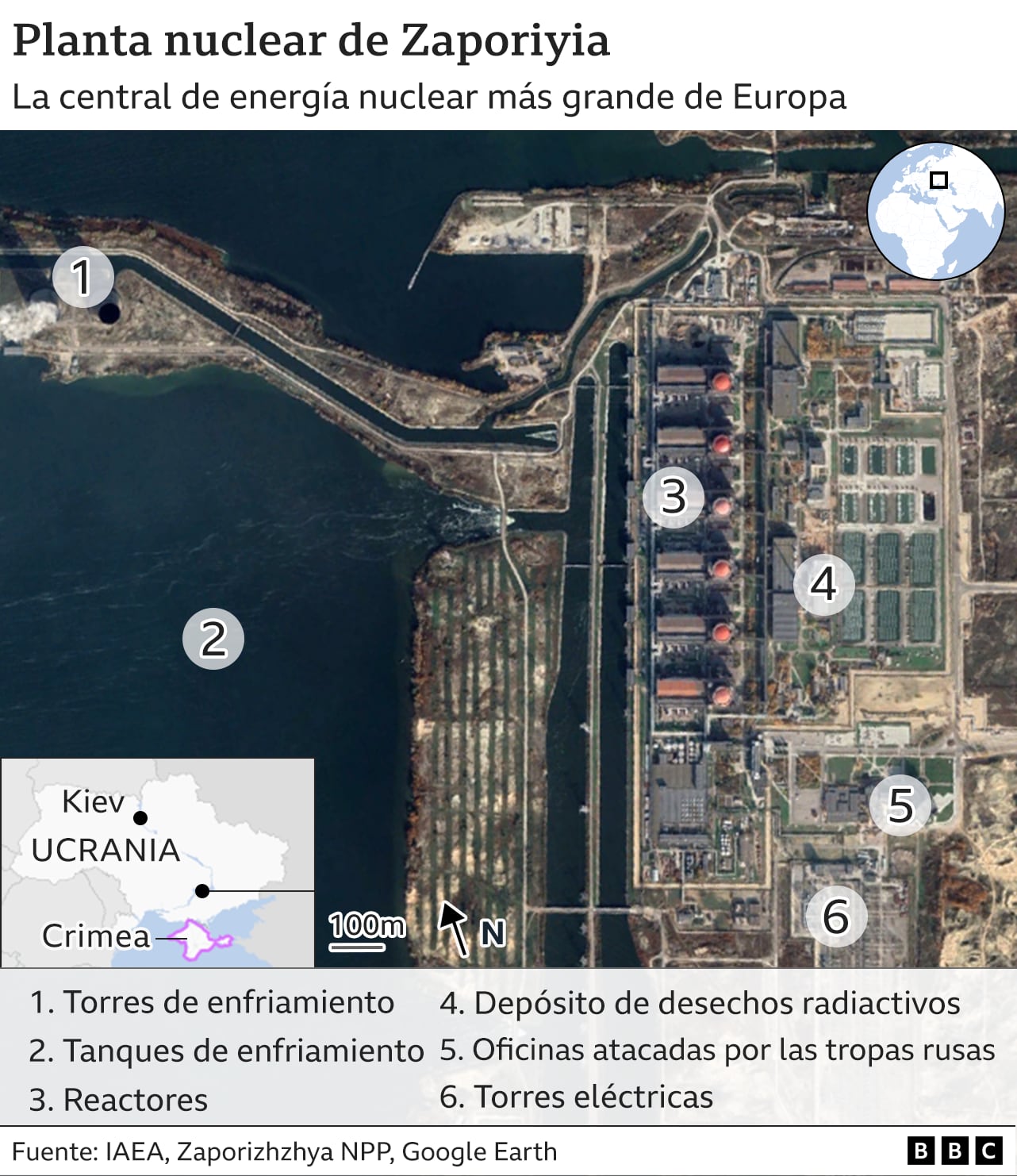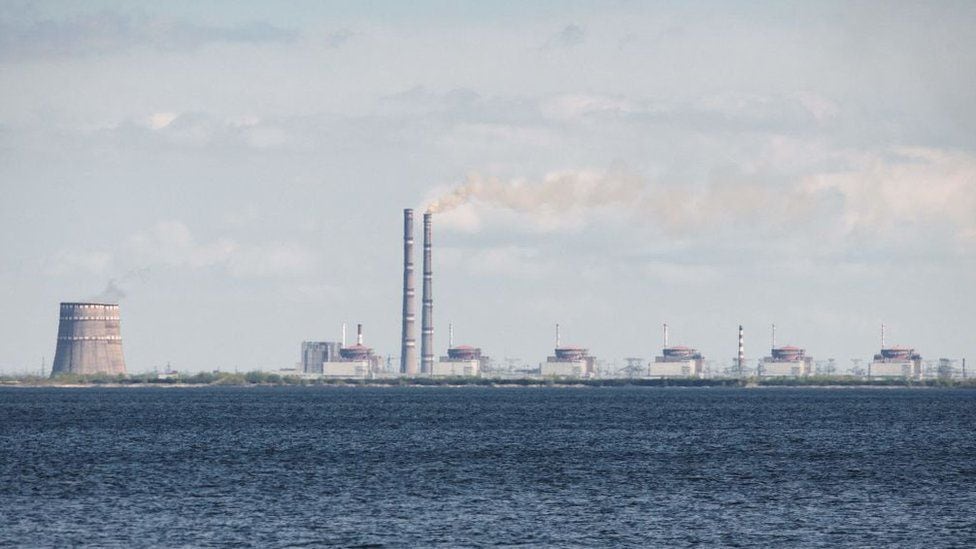In recent days, more than a dozen explosions have rocked the facilities of Zaporizhzhyathe largest nuclear plant in Europe, located in the southeast of Ukraine and under Russian control since the beginning of the invasion
Both Russia and Ukraine have accused each other of the bombing.
LOOK: “I rescue the dead from oblivion”: the collectors of corpses in the war between Russia and Ukraine
The International Atomic Energy Agency (IAEA) has repeatedly expressed concern about attacks on the plant and proposed the establishment of a nuclear security buffer zone around it.
The bombing of the nuclear power plant is playing “Russian roulette”Olli Heinonen, former IAEA deputy director general, told the BBC.
“A single projectile in the wrong place at the wrong time will have far-reaching consequences,” warned the former official at the UN nuclear watchdog.
However, he clarified that a single projectile is unlikely to cause damage to the reactor itself, which is shielded by meters of concrete and metal.
The risk, he says, is that the bombardment would cut off power to the cooling system, which would mean the reactor or spent fuel would get too hot, causing the melting of the fuel and a release of radioactivity.
Added to this is the fact that staff “can make mistakes” due to the pressure they are under, if they are capable of operating. “It’s a dangerous game and it has to be stopped,” Heinonen added.
“The news from our team is extremely worrying,” said Rafael Grossi, the head of the IAEA, whose staff on the ground said there had been damage to some buildings, systems and equipment at the plant.
“There have been explosions at the site of this major nuclear power plant, which is completely unacceptable. Whoever is behind this, must stop immediately. As I have said many times, they are playing with fire,” she added.
But, what is the plant like and what are the risks?

The largest in Europe
the nuclear power plant Zaporizhzhyabuilt between 1984 and 1995, is the largest nuclear power plant in Europe and the ninth in the world.
It has 6 reactors, each of which generates 950MW, and a total production of 5,700MW, energy enough for about 4 million homes.
According to the IAEA, in normal times the plant produces about 20% of Ukraine’s electricity and almost half of the power generated by the country’s nuclear facilities.
The plant is located in the southeast of Ukraine, in Enerhodar, on the banks of the Kakhovka reservoir, on the Dnieper River. It is about 200 km from the disputed region of Donbas and 550 km southeast of Kyiv.

The importance of the central led to Russia to seize it in March, at the beginning of the war. Since then, both sides have accused each other of repeatedly bombing it. Moscow retained the Ukrainian technicians to operate the facility.
In August, the plant was temporarily cut off from the Ukrainian power grid for the first time in its history, when a fire twice brought down its last remaining 750-kilovolt power line.
UN nuclear experts conducted their first inspection of the plant in Septemberaccompanied by Russian soldiers, and discovered that the integrity of the plant had been “violated several times”
The difference with Chernobyl
Some analysts point out that the central Zaporizhzhya it is different and safer than Chernobylwhich was the site of the world’s worst nuclear disaster in 1986.
The six reactors ZaporizhzhyaUnlike Chernobyl, they are pressurized water reactors (PWRs) and have containment structures around them to stop any release of radiation.
“Zaporizhzhya it was built in the 1980s, so it is relatively modern,” he says. Mark Wenmann, director of the Center for Doctoral Training in the Future of Nuclear Energy. “It has a solid containment building. It is 1.75 m thick, made of heavily reinforced concrete on a seismic bed. [para soportar los terremotos]… Y it takes a lot to break it”.
He rejects comparisons with Chernobyl in 1986 or Fukushima in 2011. Chernobyl had serious design flaws, he explains, while in Fukushima the diesel generators were flooded, which he believes would not happen in Ukraine, since the generators are inside the containment building. .
the plant of Zaporizhzhya does not contain graphite in its reactor either. At Chernobyl, graphite caused a significant fire and was the source of the radiation plume that traveled across Europe. In addition, PWR reactors also have built-in fire protection systems.
After 9/11, nuclear power plants were tested for possible attacks by large aircraft and found to be largely safe, so damage to a reactor containment building may not be the greatest danger.

The risk of electrical supply
More worrisome is the loss of power supply. to nuclear reactors. If that happens and the standby diesel generators fail, there would be a loss of coolant. Without electricity to power the pumps around the hot reactor core, the fuel would start to melt.
The plant was temporarily disconnected from the Ukrainian grid on August 25, when a fire twice knocked down its last remaining 750-kilovolt power line. The other three were taken out of service during the war.
In that case, the electricity was supplied to a less powerful line from a nearby coal-fired power plant and, according to authorities, diesel generators were also used.
However, the Ukrainian nuclear agency claims that generators are not a long-term solution and that if the last power line in the national grid breaks, nuclear fuel could start to melt, “resulting in a release of radioactive substances.” to the environment”.
A failure in the pump and the generator could cause the overheating of the reactor core and the destruction of the plant facilities.
“That wouldn’t be as serious as Chernobyl, but it could still cause a release of radioactivity. and that depends on which way the wind blowssays Claire Corkhill, professor of nuclear material degradation at the University of Sheffield.
For her, the risk of something going wrong is real, and Russia would be as exposed as Central Europe.
However, Professor Iztok Tiselj, Professor of Nuclear Engineering at the University of Ljubljana, Slovenia, believes that the risk of a major radioactive incident is minimalsince only two of the six reactors are in operation.
“From the point of view of European citizens there is no reason to worry,” he says. The other four reactors are in a cold shutdown state, so the amount of energy required to cool the reactors is less.
The human factor
Another significant safety risk could come from spent fuel in Zaporizhzhya. Once the fuel is finished, the waste is cooled in spent fuel pools and then moved to dry storage.

“If they were damaged, there would be a release of radioactivity, but it wouldn’t be anywhere near as serious as the loss of coolantsays Professor Corkhill.
Iztok Tiselj believes that any release would be so small as to be insignificant.
At the center of this crisis are the plant’s staff, working under Russian occupation and under a lot of stress. Two workers have told the BBC about the daily risk of being kidnapped.
UN Secretary General Antonio Guterres has called on Russia to withdraw its troops and demilitarize the area with a “secure perimeter”. Russia has refusedarguing that this would make the plant more vulnerable.
Employees have warned of the disaster that would be if Russia tried to shut down the entire plant in order to disconnect power from Ukraine and reconnect it to the occupied Crimean peninsula instead.
Mark Wenman thinks it’s the human factor the one who poses the greatest risk of a nuclear accident, either from chronic fatigue or stress: “And that violates all safety principles.”
If something were to go wrong, they’d have to be in top shape, and presumably they’re not, says Claire Corkhill.
In a letter signed by dozens of employees, they call on the international community to reflect: “We can professionally control nuclear fission,” he says, “but we are defenseless against the irresponsibility and madness of the people.”
Source: Elcomercio
I am Jack Morton and I work in 24 News Recorder. I mostly cover world news and I have also authored 24 news recorder. I find this work highly interesting and it allows me to keep up with current events happening around the world.

:quality(75)/cloudfront-us-east-1.images.arcpublishing.com/elcomercio/GE4TAOBNGEYS2MRSKQYDAORRHE.jpg)


:quality(75)/cloudfront-us-east-1.images.arcpublishing.com/elcomercio/QO3B3KMDGRBC5MUD7ES2LMICCQ.png)

:quality(75)/cloudfront-us-east-1.images.arcpublishing.com/elcomercio/S3AQ3LB6FVD2TDQKISS5ZC4IRY.jpg)
